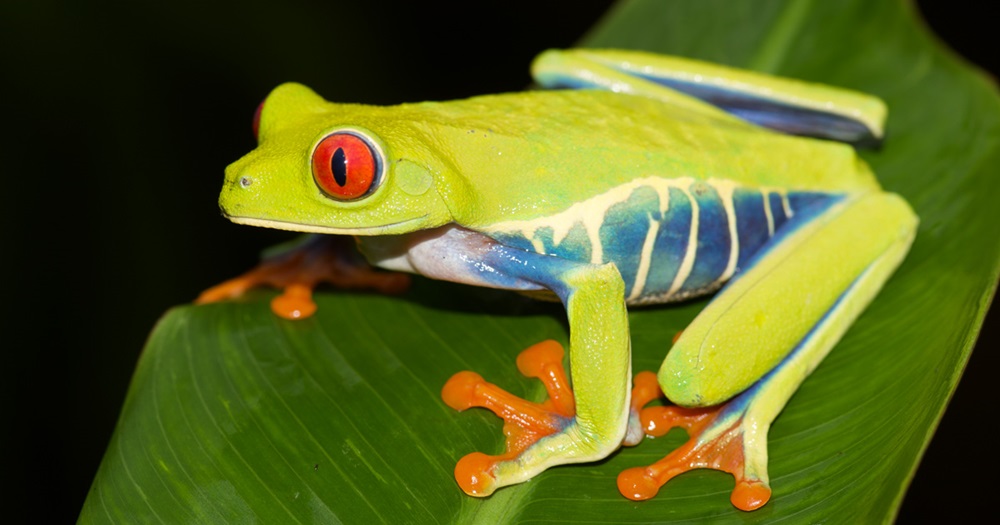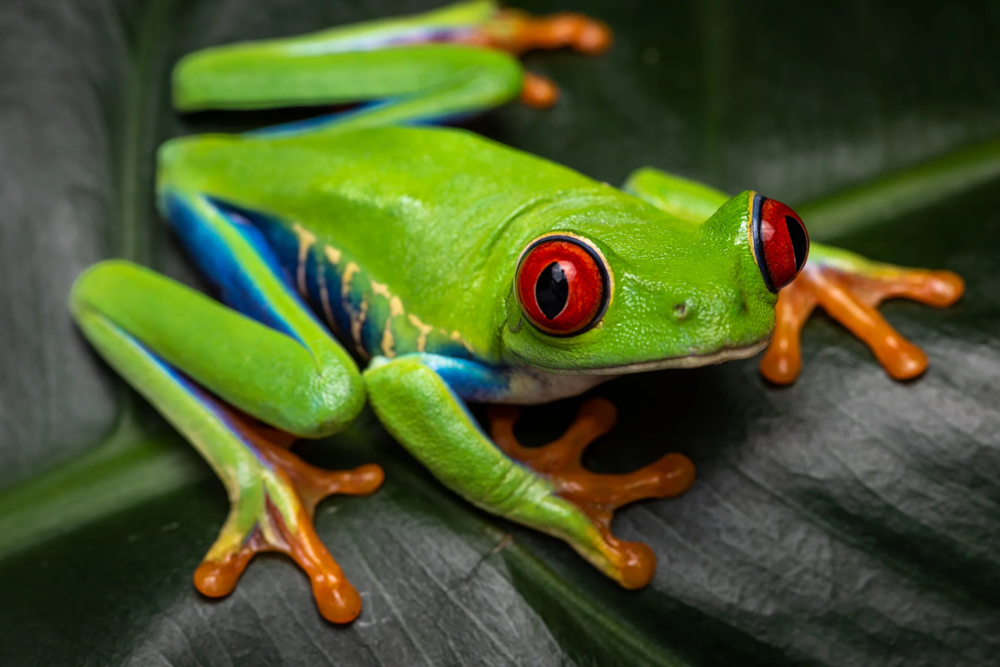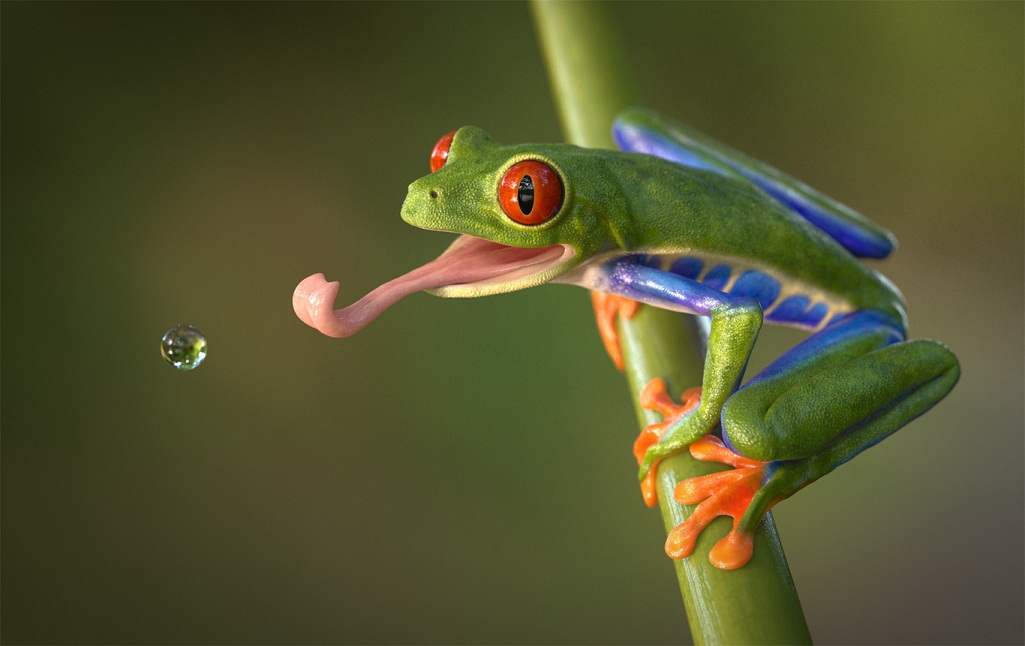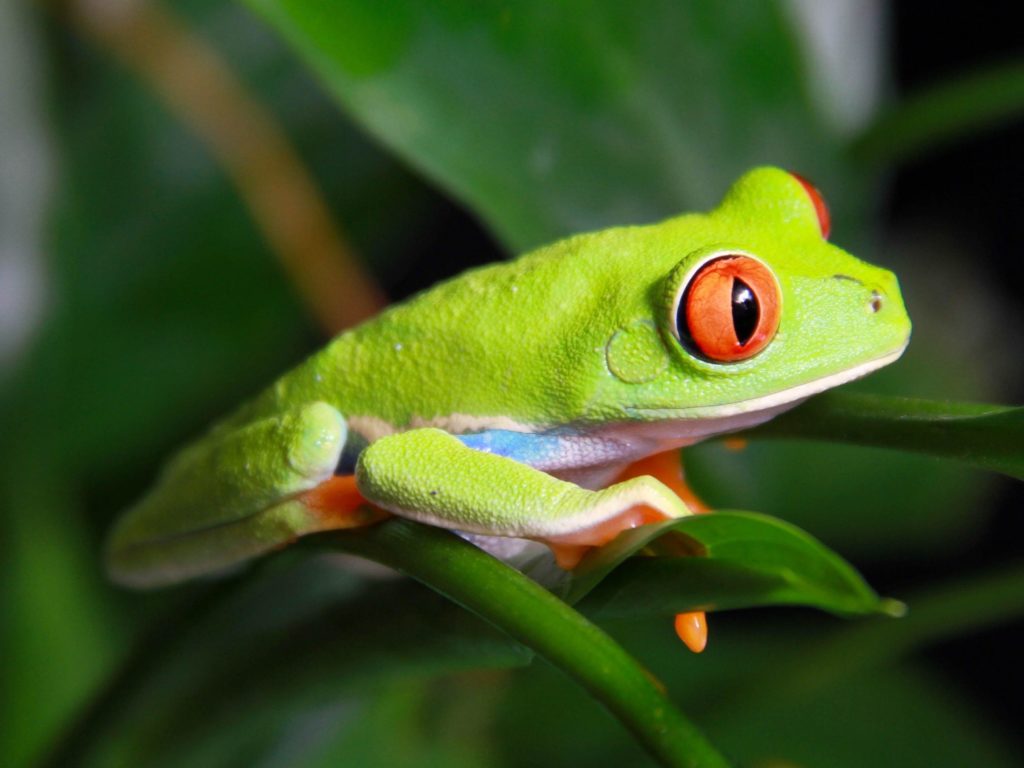The Red-Eyed Tree Frog is a captivating amphibian that calls the lush rainforests of Central America home. With its vibrant green skin, bulging red eyes, and striking blue and orange markings, this frog is a true natural wonder. Beyond its alluring appearance, the Red-Eyed Tree Frog plays a vital role in the delicate balance of the rainforest ecosystem.

Physical Description
Vivid Colors and Patterns
The Red-Eyed Tree Frog’s most distinctive feature is its bright green skin, which helps it blend seamlessly into the foliage of its arboreal habitat. However, when threatened, the frog reveals its true colors. Its huge, bulging red eyes and bright blue and orange markings on its sides and legs serve as a startling defense mechanism, momentarily paralyzing potential predators.
Size and Structure
These frogs are relatively small, with males reaching up to 2 inches in length and females growing slightly larger at around 3 inches. Despite their diminutive size, they are well-equipped for life in the trees. Their slender bodies and large, sticky toe pads allow them to effortlessly cling to leaves and branches.

Habitat and Distribution
Natural Habitat
Red-Eyed Tree Frogs thrive in the humid, tropical lowland rainforests of Central America. They prefer areas with abundant vegetation, temporary ponds, and streams, which provide the moisture they need to keep their skin hydrated.
Geographic Range
The Red-Eyed Tree Frog can be found from southern Mexico to northern South America, including countries like Guatemala, Honduras, Nicaragua, Costa Rica, and Panama. However, habitat loss due to deforestation and development poses a significant threat to their populations.

Behavior and Lifestyle
Nocturnal Habits
These frogs are nocturnal, spending their days sleeping on the underside of leaves and their nights hunting for insects, smaller frogs, and other prey. Their large, sticky tongues allow them to catch their meals with ease.
Breeding and Reproduction
During the rainy season, male Red-Eyed Tree Frogs gather near temporary ponds and engage in elaborate mating rituals. Females lay their eggs on leaves overhanging the water, and when the tadpoles hatch, they drop into the pond below. The tadpoles metamorphose into tiny froglets within a few months, eventually developing the vibrant colors and patterns of their adult counterparts.

Ecological Role
Predator and Prey Relationships
As both predators and prey, Red-Eyed Tree Frogs play a crucial role in the rainforest food chain. They feed on a variety of insects and smaller frogs, helping to control populations. In turn, they serve as a food source for birds, snakes, and other predators.
Environmental Impact
Amphibians like the Red-Eyed Tree Frog are considered indicator species, meaning their health and abundance reflect the overall condition of their ecosystem. By monitoring frog populations, scientists can gain valuable insights into the effects of environmental changes, such as climate change and habitat loss.
Conservation and Threats
Current Threats
Despite their widespread distribution, Red-Eyed Tree Frogs face numerous threats to their survival. Habitat destruction due to deforestation, agricultural expansion, and urban development is the primary concern. Additionally, climate change and the introduction of non-native predators can have devastating effects on frog populations.
Conservation Efforts
Several organizations, such as the Rainforest Alliance and local conservation groups, are working to protect the Red-Eyed Tree Frog and its habitat. These efforts include reforestation projects, sustainable agriculture initiatives, and public education campaigns. By supporting these organizations and making eco-friendly choices in our daily lives, we can all contribute to the conservation of this remarkable species.

Fun Facts and Trivia
Interesting Facts
- Red-Eyed Tree Frogs can change color to match their mood, ranging from bright green to dark brown.
- Their distinctive red eyes are a defense mechanism called “startle coloration,” which can momentarily paralyze predators.
- These frogs have a lifespan of up to 5 years in the wild.
In Popular Culture
The Red-Eyed Tree Frog’s striking appearance has made it a popular subject in art, media, and popular culture. Its image is often used to promote rainforest conservation and raise awareness about the importance of protecting these fragile ecosystems.
Conclusion
The Red-Eyed Tree Frog is a true marvel of nature, captivating all who encounter it with its vibrant colors and unique adaptations. As a vital part of the rainforest ecosystem, the fate of this frog is inextricably linked to the health of its habitat. By supporting conservation efforts and making sustainable choices, we can ensure that these colorful jewels of the rainforest continue to thrive for generations to come.

